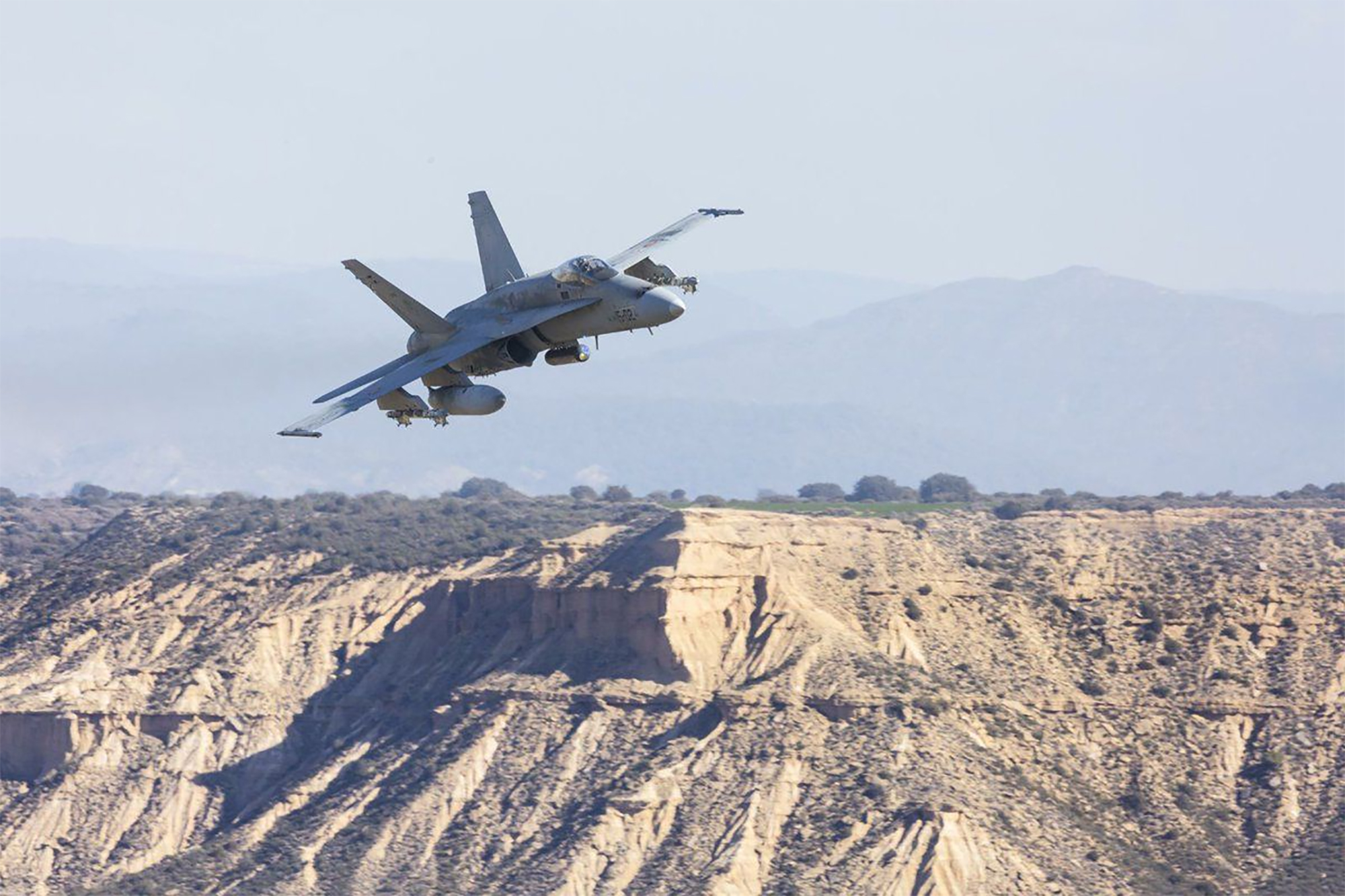DSEI Fair in London: the war starts here, let's stop here
- The DSEI Defence and Security Equipment International, the largest arms trade show in the world, will be held from 12 to 15 September in the ExCeL of London, so that producers, buyers, intermediaries, authorities and military arrived from all over the world can negotiate the most sophisticated technologies of death. In the lobby, they will wait for the activists who have approached to stop the arms trade, the fuel of war.

What does the world's largest arms market look like? Although the ARGIA reader can't see it inside, because ordinary people who don't have a special invitation don't have access, if you get closer to the portal, you'll find a sophisticated airplane that overlooks the autumn sun in England. You’ll also find warships tied at the Royal Victoria Dock so that the 34,000 salespeople and shoppers approaching the gigantic shipowner will celebrate their business at dusk with cocktails.
The STAF Stop The Arms Fair movement explains that if you manage to penetrate above security barriers, you would see with your own eyes drones, tanks, rifles, helicopters, armed cars, tear gas, bombs and missiles sold there. Bullets are exhibited in splendid jalons and a whimsical dictator can find his own golden pistol with gold. Here the dictators are accompanied by British officials and military personnel.
The military shows their teams. A room may look like a bombed street. Beyond that you can try to climb into an armor or sit behind a canyon, surrounded by a murmur of serene conversations.
However, despite this quiet aspect, the DSEIS is not a good meeting, STAF activists say. By arguing that the equipment Israel exhibits in its pavilion is “proven in battle,” what it really shows is that it is tested on the skin of the Palestinians. Millions of pounds of public money have been drained in the spectacular warships. Today you can find the twin of the radiant inlet airplane bombing schools and hospitals in Yemen adorned with symbols from Saudi Arabia.
Every two years, the world's largest SISD arms market opens its doors. The first edition kicked off on September 11, 2001 -- just the same day that the Islamists flew in the Twin Towers of New York. Several witnesses, present at the London Fair, commented on how mind-blowing it was to see live images of the attacks from those halls hit with the most modern weapons.
When protests started from the outset, the organizers of the 2003 fair demanded that cluster bombs that are scattered in the air in many small bombs should not be brought, precisely because in the United Kingdom there was a lot of controversy about those munitions that kill civilians. However, several media outlets have already shown on more than one stand the sale of these lethal bombs, famous for the Iraq war.
In 2007, the municipality of Newham, where the exhibition fair is located, asked for its suspension because it does not seem moral until September 11 to celebrate a large arms fair in a neighborhood where half of the population has been fleeing countries at war. The actions of the anti-war movement have also been increasing during those years, but they have not blurred the success of the fair in the war industry.
Devices to kill Ontsa
The fair is organized by the company Clarion Events. The trade fairs organized in 50 countries are increasingly related to security issues: Borderpol with border security, Bahrain's military exhibition, the electronic war in Lausanne...
As announced by the organizers of the DSEI on its website, the sessions and seminars will be divided as stands in five blocks: The Air War, the Earth, the Navy, the Security and the Joint, the Saski Naski of many parts of the war (communications, electronic war, logistics, war medicine…). A total of 34,000 qualified visitors are expected, knowing that over the past year 30,000 were reached, “including defence ministers, the military and the international armed forces, the main players in the industry and private companies.” In the 2015 edition 42 pavilions were counted, 2,900 VIP characters arrived from 84 countries, visitors from 108 countries...
Sellers are well classified on the web, at the head of all the Top Ten group of the world arms trade: Lockheed Martin (absolute winner), Boeing, BAE Systems, Raytheon, Northrop Grumman, General Dynamics, Airbus, United Technologies, Leonardo and L2 Tecnologies. Next to them will be the big scientific companies that we citizens do not link to war, like Fujitsu in Canon… They will offer countless services and products in the most modern versions, whether they be hand weapons, missiles, airplanes, tanks, warships, electronic devices or public control systems.
“The weapons sold here – say the activists of the Stop The Arms Fair campaign – are the fuel of deaths, destruction and injustices caused by the military, police and border guards around the world. Here the war begins, and here we can work to keep it.”
A wide range of activities have been organised since the end of August in London. Between September 4 and 11, the Occupy DSEI camp was to be held in the vicinity of the ferileku, highlighting each day a component. On day 4, “Don’t build more Israel.” Day 5 “Don’t believe in war” (No Faith in War), pacifying the prayers, songs and other actions of activists from different religions and beliefs. On Day 6, against nuclear weapons, against the restoration of Trident atomic missiles, and against the entry of military equipment into the enclosure. That same day, “Guns instead of Renewables,” claiming jobs instead of death. On Day 7, “Freedom to move for people, not for weapons” will be organized by immigrants, feminists and queer. On Day 8, lectures in the atrium of the fairgrounds, taught by intellectuals and academics.
September 9 has been declared the central day against arms trafficking organised on the DSEI portal with music of all kinds, theatre, art exhibitions and plentiful carnivals. Day 10 “War has to stay here”, a day to inform citizens about the trade fair and the arms trade. On the 11th, silent night in solidarity with the victims of world wars, a morning floral offering in the waters of the pier where warships are sold.
In September 2015, several of the thousands of military and executive officers who came to buy or sell arms found a special reception committee at the airport itself: apparently the attendees who had come to facilitate travel to the fair were anti-war activists and had to endure the complaints on the metro as they walked to their ships. The result is in video on the internet: “Meeting and greeting arms dealers #stopdsei”.
To conclude the previous article, we put on the table an objective that Zedarria and the Basque Government do not want to address when talking about production for waste and war in the Basque Country (EHXGE, or military industry): That there is no war in the world that feeds on... [+]
A few weeks ago, the President of the European Union, Ursula von der Leyen, reported on the need for military spending of eight hundred billion euros. This expenditure is said to be in response to a military threat to which Europe is exposed, and it has been confirmed that there... [+]
As we explained in our book on adaptation, in view of the decline in European military spending since the late 1980s of the last century, at the beginning of the 21st century European death traders decided to organize themselves and structured themselves as lobbies imitating the... [+]
In recent weeks and months, all kinds of political, economic and business organizations have been constantly raising the sounds of war. But what if the purpose of this buzzing noise was not to allow us to think clearly and the fear was to confuse our analysis? Let’s try to... [+]
At the beginning of the year, the Zedarria group publicly supported the "opening of the debate" on the "defense" industry (as well as the nuclear industry), to which the Basque Government has immediately joined. First, through Mikel Torres, Vice President and Economic Counselor, who... [+]
Ukrainaren ondoren Polonia?
Europar Batasunak Ukrainako gerra hauspotu du Kiev armaz hornituta, eta menia oraindik airean delarik, gerraren zikloan murgilduta dago bete-betean. Hori bai, bere diskurtsoa modulatzen ari da, eta gero eta gehiago hitz egiten du balizko su-etenaz... [+]
Bizitza erdigunean jartzeko abagunea ikusi genuen feministok zein ekologistok Covid-19 pandemia garaian. Ez ginen inozoak, bagenekien boteretsuak eta herritar asko gustura itzuliko zirela betiko normaltasunera. Bereziki, konfinamendu samurra pasa zutenak haien txaletetan edo... [+]
At the end of June we finished the first parts of the book Conversión de la industria militar en Euskal Herria para no fabricar más guerras (Adaptation of the arms industry in the Basque Country so as not to create more wars) La guerra is coming! It explores and investigates... [+]
Historia errepikatzen dela idatzi zuen Marxek, “lehenik tragedia gisa, gero fartsa moduan”. Armagintzaren eta militarismoaren inguruan errepikapen hutsa ez, espiralean goraka doan buklea ari gara bizitzen, fartsatik asko duena, eta tragedian amaitzeko gero eta aukera... [+]
“Ez dugu gerraren aurrean etsi nahi, ez dugulako hilerrietako bakea nahi”, dio manifestuak, eta agintariei irtenbide politiko baten alde lanean jartzeko eskatu diete. Sinatzaileen artean daude Delàs institutua, Gernika Gogoratuz edo Ongi Etorri Errefuxiatuak... [+]









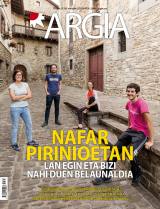

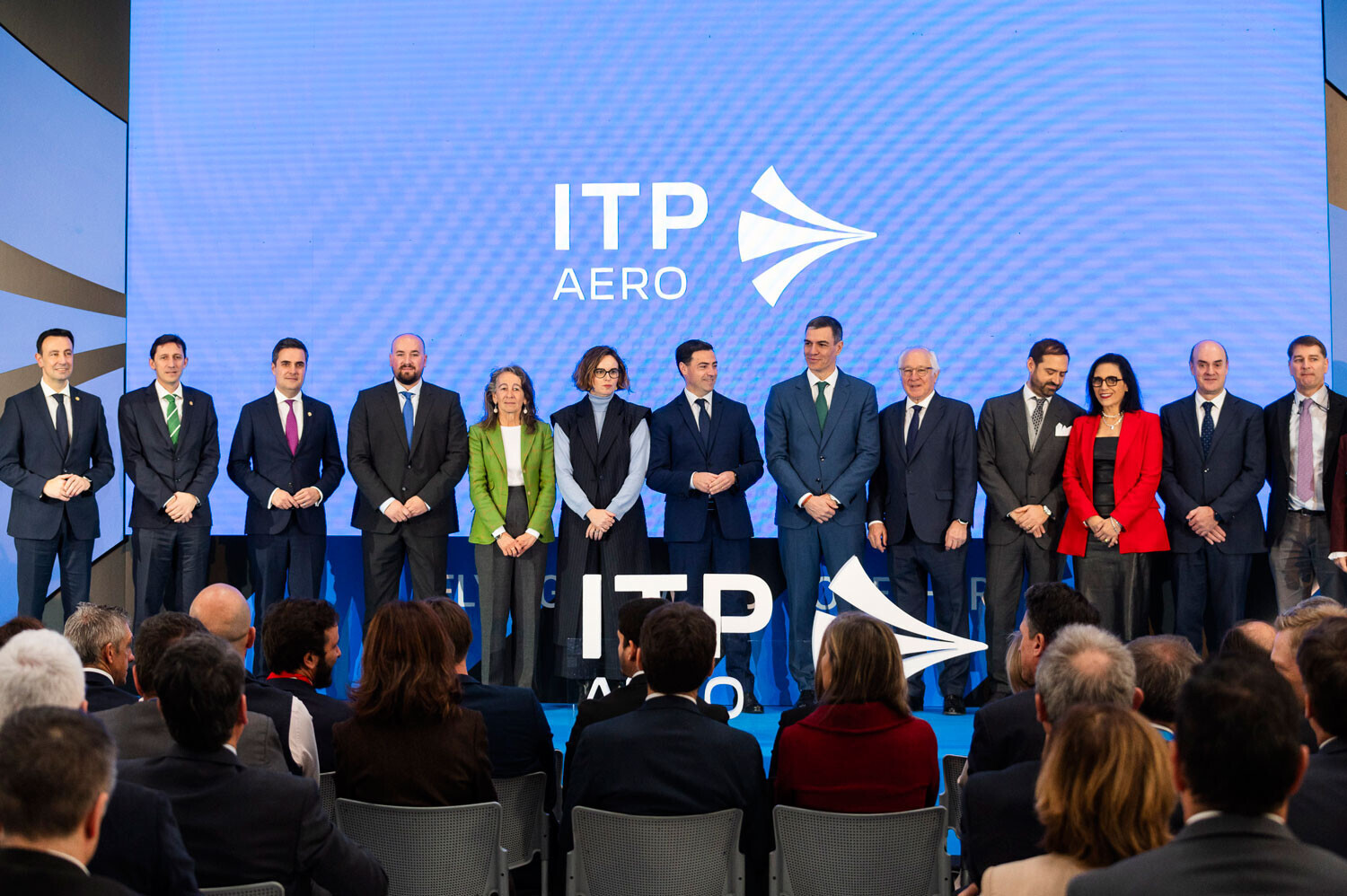

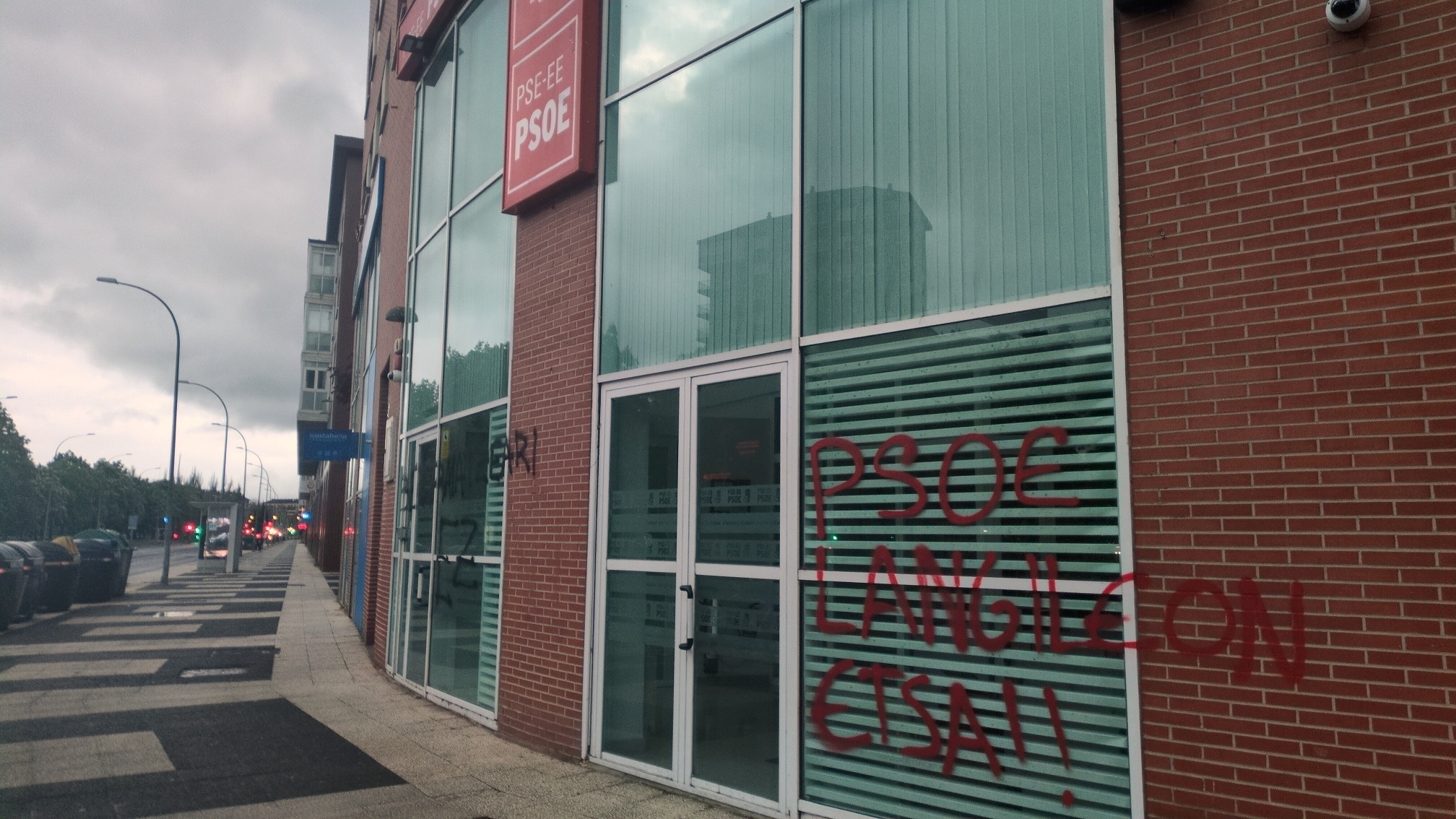


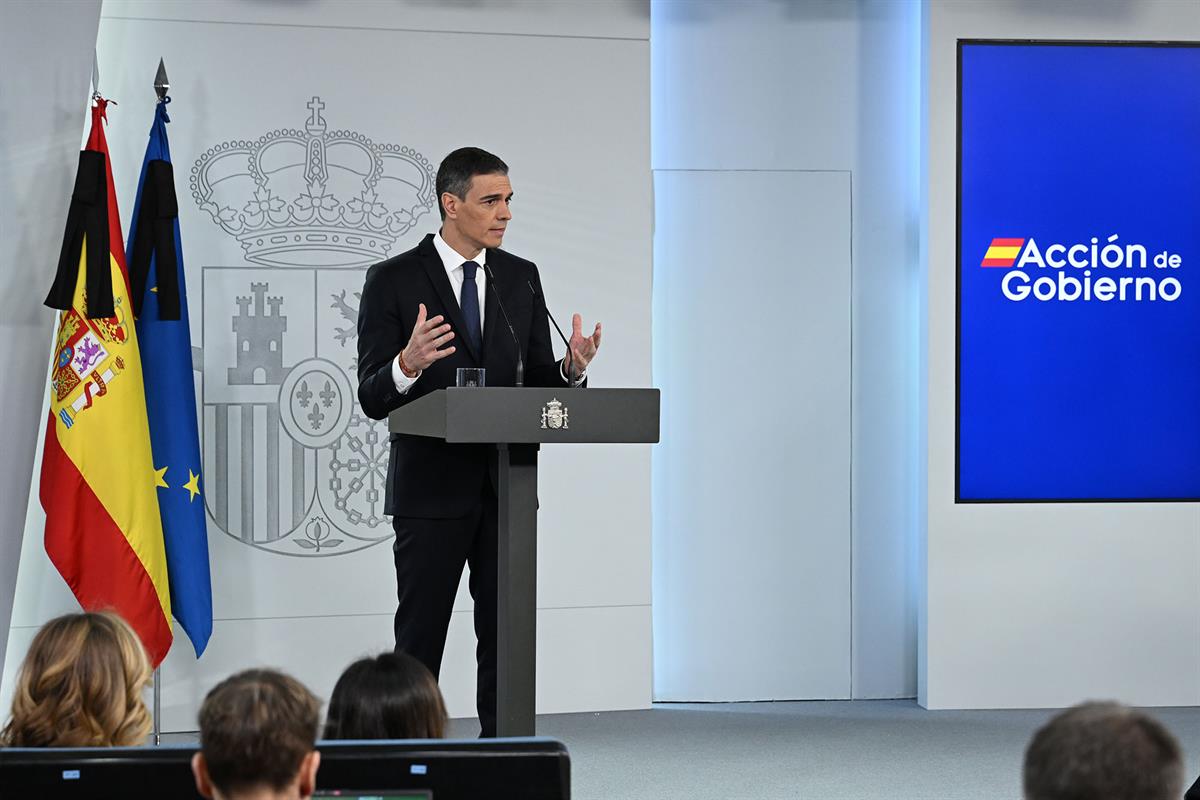


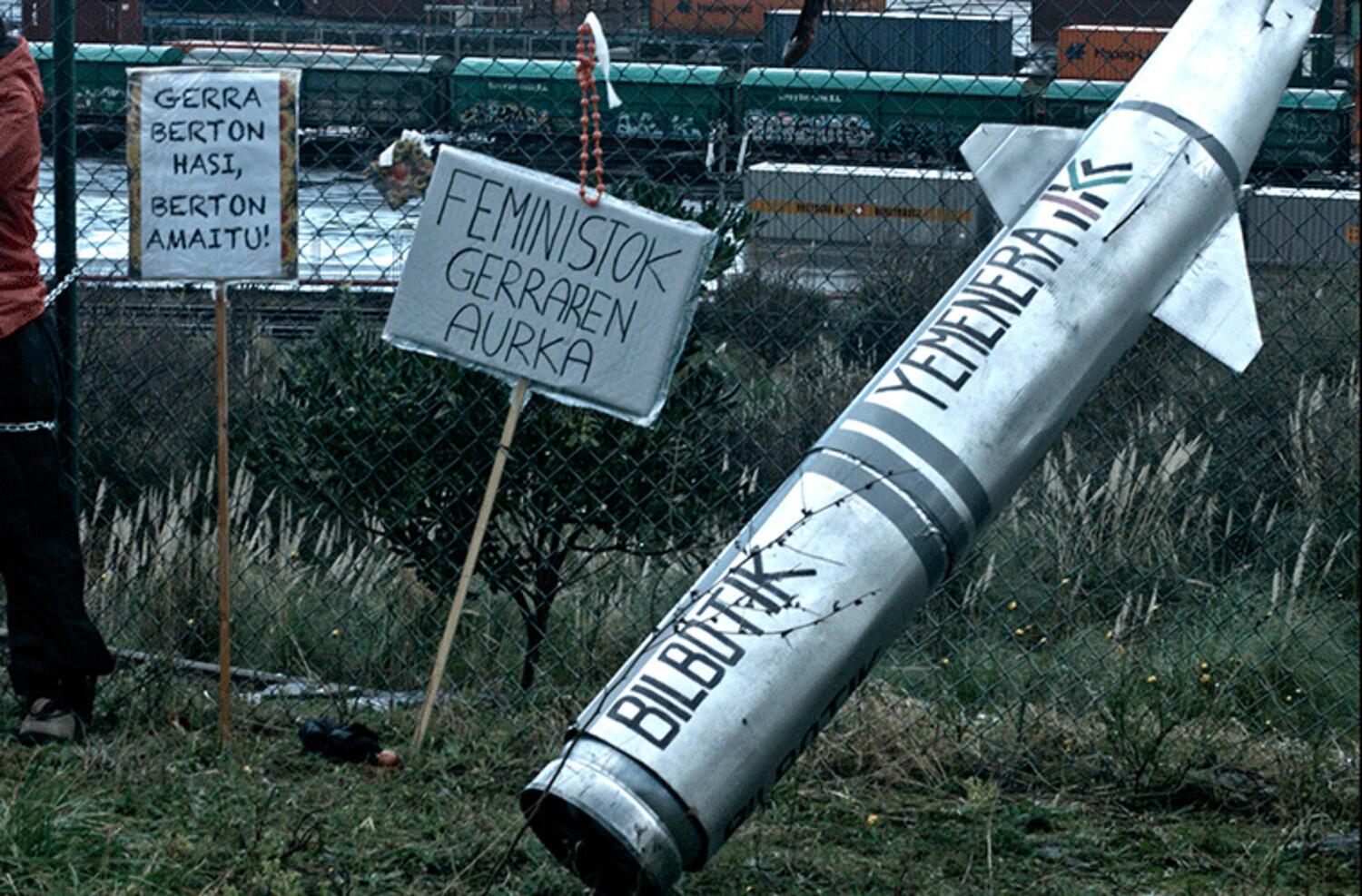


.jpg)

